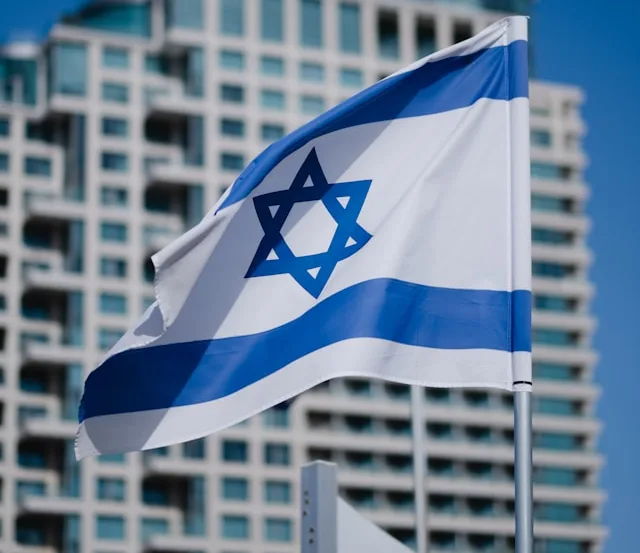Tensions escalate as Hezbollah retaliates with a rocket barrage following Israeli attacks on Hezbollah targets in Lebanon, leading to casualties and heightened fears of an all-out conflict
In a dramatic escalation of hostilities, Hezbollah launched a barrage of rockets at the Golan Heights after Israel conducted airstrikes deep inside Lebanon. This sharp increase in violence comes amid fears of a broader regional conflict.
The Israeli military reported that it had targeted Hezbollah weapons storage facilities in the Bekaa Valley overnight. These strikes resulted in at least one death and injuries to 30 others, according to the Lebanese health ministry. The facilities hit were reportedly critical to Hezbollah’s military capabilities.
In retaliation, Hezbollah, supported by Iran, aimed rockets at Israeli military positions in the Golan Heights. Israeli authorities confirmed that two homes in the settlement of Katzrin were struck, injuring one person. The rocket attack prompted immediate concerns for civilian safety, with Brigadier General Alon Friedman accusing Hezbollah of deliberately targeting the civilian population.
Embed from Getty ImagesThe situation further intensified with a separate Israeli operation that resulted in the death of Khalil al-Makdah, a senior member of the Palestinian Fatah movement, in Sidon. Israel alleged that al-Makdah, who was linked to Iran’s Revolutionary Guards, was involved in directing attacks and smuggling weapons into the West Bank. This assassination, the first of its kind since the recent outbreak of violence, has been condemned by Fatah, which accused Israel of seeking to provoke a larger conflict.
The Israeli Defense Forces (IDF) also reported strikes on Hezbollah positions, including a compound used for air defense systems and a fighter in Beit Lif. The strikes in the Bekaa Valley and other locations caused further casualties, with at least nine children among the injured.
Hezbollah responded by launching approximately 50 rockets at an IDF logistics base in the Golan Heights. Some rockets landed in Katzrin, a settlement with around 8,000 residents. A 30-year-old man sustained moderate injuries from shrapnel, which ignited a fire in his home. Hezbollah also claimed responsibility for a drone attack on Israeli military bases and warehouses near the Sea of Galilee. While some drones were downed, no casualties were reported from this attack.
The Israeli government has indicated that the military’s focus is shifting from Gaza to the Lebanese border, preparing for potential further escalation. The Israeli Defense Minister, Yoav Gallant, highlighted the strategic importance of the strikes against munitions warehouses in Lebanon as part of a broader defensive strategy.
As the conflict intensifies, international concern grows over the potential for a full-scale war in the region. Mediators are working to prevent further violence and to stabilize the situation amid rising tensions and significant casualties on both sides.
Analysis:
Political: The escalating conflict between Israel and Hezbollah reflects broader geopolitical tensions in the Middle East. Israel’s military actions against Hezbollah and the killing of a Fatah leader underscore its ongoing efforts to counter Iranian influence and disrupt militant activities linked to Tehran. The strikes and retaliations illustrate the high-stakes nature of regional politics, where actions by state and non-state actors often trigger significant responses, further entrenching divisions and complicating diplomatic efforts. The international community’s reaction to these developments will likely impact future diplomatic and military strategies in the region.
Social: The violence has profound social implications, affecting civilian populations directly caught in the crossfire. In Katzrin and various Lebanese areas, the rocket attacks and airstrikes have disrupted daily life, causing injuries and displacing families. The social fabric of affected communities is strained as they face both immediate threats and long-term impacts of the conflict. The increasing civilian toll underscores the urgent need for humanitarian support and conflict resolution measures to address the suffering of those caught in the conflict zone.
Racial: The conflict highlights the broader racial and ethnic tensions in the region, with various groups aligning with either side based on historical grievances and current alliances. The sectarian dimensions of the conflict, particularly between Hezbollah’s Shiite base and Israel’s predominantly Jewish population, further complicate efforts to achieve peace. The involvement of Palestinian factions and their interaction with both Hezbollah and Israel adds another layer of complexity to the racial dynamics of the conflict.
Gender: The impact of the conflict on gender dynamics is evident in the disproportionate effects on women and children, who are often more vulnerable during times of violence. Reports of injuries and casualties among women and children highlight the gendered dimensions of war, where the consequences of conflict disproportionately affect these groups. The need for gender-sensitive approaches in humanitarian aid and conflict resolution becomes crucial in addressing these disparities.
Economic: The economic consequences of the escalating conflict are substantial for both Israel and Lebanon. The disruption caused by rocket attacks and airstrikes impacts infrastructure, businesses, and daily economic activities. The financial strain on governments to fund military operations and humanitarian aid further exacerbates economic challenges. Additionally, the potential for a wider conflict threatens regional economic stability and international trade, given the strategic location of the affected areas and their economic importance.
